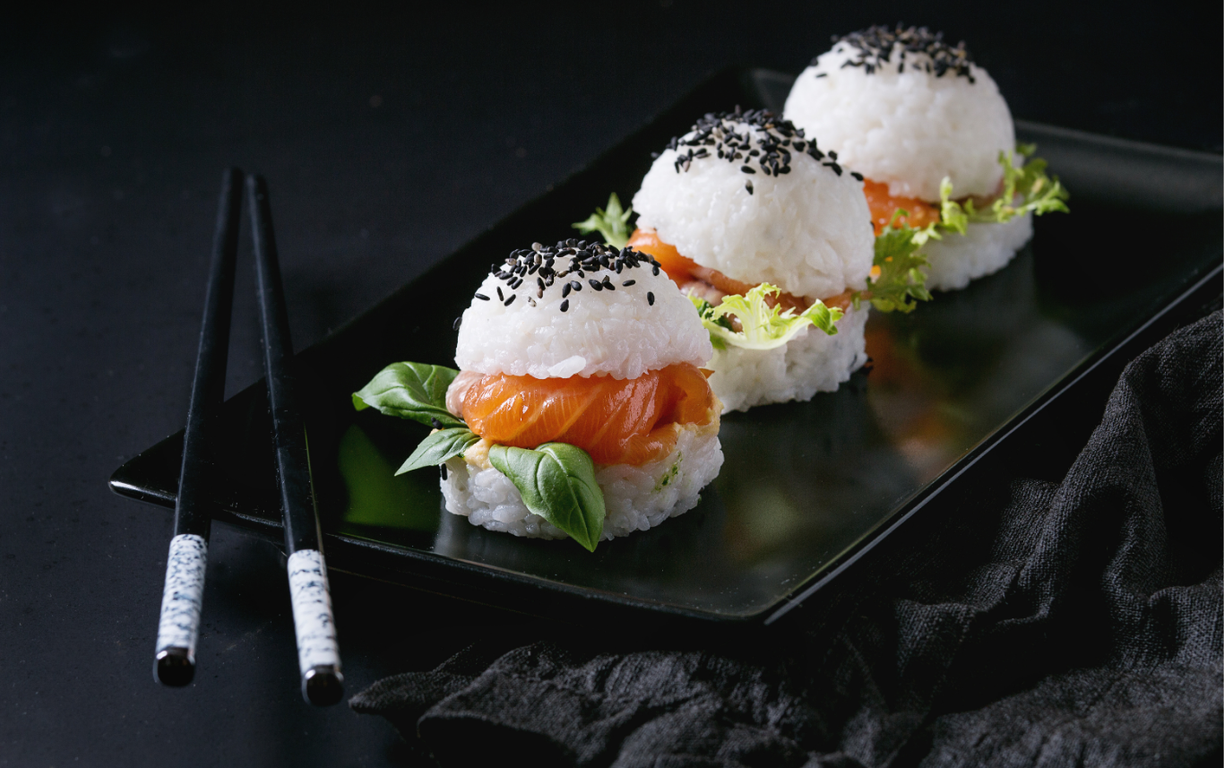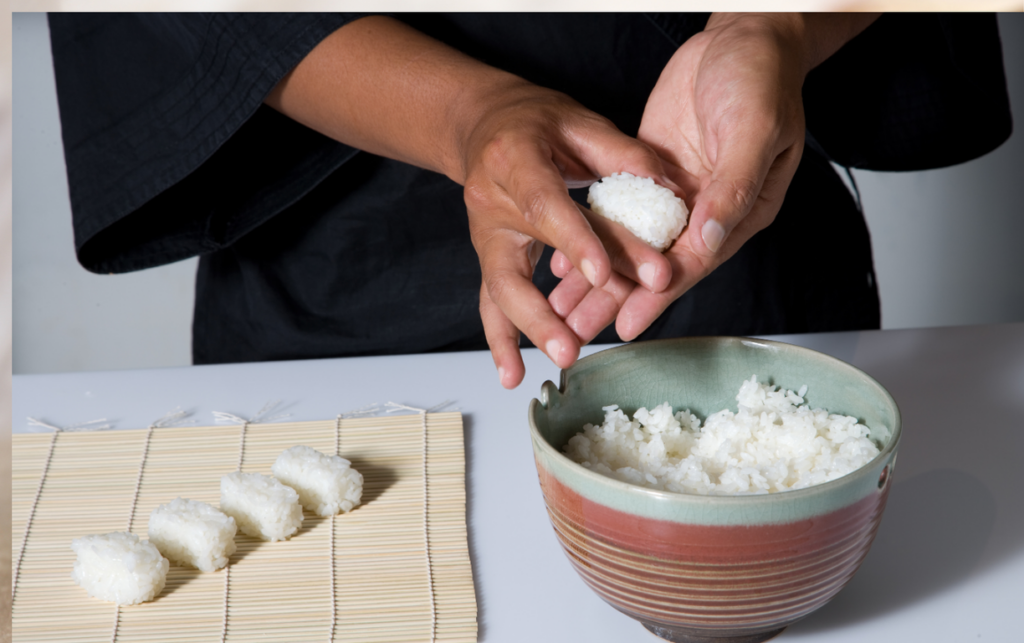Physical Address
304 North Cardinal St.
Dorchester Center, MA 02124
Physical Address
304 North Cardinal St.
Dorchester Center, MA 02124

Cooking sushi rice at home can seem daunting, but with the right methods, you can create perfect sushi rice every time. The key to achieving authentic sushi rice lies in the right combination of preparation, cooking techniques, and seasoning. Whether you’re planning to make rolls or sashimi, your sushi’s success starts with how you handle this essential ingredient.

There are various types of sushi rice, and understanding the differences can help you choose the best one for your dish. You will learn the importance of rinsing the rice, the correct cooking methods to use, and how to season it so that it enhances the flavors of your sushi. With some simple tips and techniques, you can bring the taste of Japan into your kitchen.
Mastering the art of making sushi rice is a crucial first step in crafting delicious homemade sushi. By following the right steps, you will not only impress your friends and family but also enjoy the satisfaction of creating a dish that’s fresh and flavorful.
Choosing the right type of sushi rice is crucial to achieving that perfect texture and flavor in your sushi. The two main categories include traditional Japanese short-grain rice and alternative varieties that can also work well. Each type has unique qualities that affect how your sushi turns out.
Japanese short-grain rice is the gold standard for sushi making. Varieties such as Koshihikari, Sasanishiki, and Akitakomachi are popular choices among chefs.
These types of rice are specially cultivated to give the right balance of texture and taste for sushi.
While Japanese short-grain rice is preferred, you might consider alternatives in certain situations. Sushi rice blends can be used if you cannot find traditional rice.
Experimenting with these alternatives may yield interesting results, but they may not achieve the authentic taste and texture of traditional sushi rice.
To make great sushi rice, you need to focus on two key steps: rinsing the rice and getting the rice to water ratio right. Both of these steps are crucial for achieving the perfect texture and flavor.
Start by rinsing the rice to remove excess starch. This will help prevent the rice from becoming too sticky. Place your rice in a large bowl and cover it with cold water. Use your hands to gently swish the rice around.
After a few minutes, the water will become cloudy. Carefully pour off this water using a fine mesh strainer to keep the rice in the bowl. Repeat this process several times until the water runs clear. This usually takes about 4-5 rinses.
Once rinsed, let the rice drain for about 15-30 minutes. This helps remove any remaining water before cooking. Drained rice cooks more evenly and absorbs water better.
Getting the right rice to water balance is essential for cooking sushi rice. A common ratio is 1 cup of rice to 1.2 cups of water. This slight increase in water helps achieve the tender, sticky texture that sushi rice needs.
After rinsing, transfer the rice to your cooking pot or rice cooker. Pour in the measured water, making sure it covers the rice evenly.
Let the rice soak for about 30 minutes before cooking. This soaking period allows the grains to absorb some moisture. It can lead to a better overall texture.
If you’re using a rice cooker, follow the manufacturer’s instructions for cooking times. If you’re using a stovetop, bring the water to a boil, then reduce to a simmer and cover. Cook for about 15-20 minutes, or until all water is absorbed.
Cooking sushi rice can be done in various ways, and each method has its own benefits. Whether you prefer the ease of a rice cooker, the control of stovetop cooking, or the speed of an Instant Pot, you can achieve perfect sushi rice at home.
Using a rice cooker is one of the easiest ways to make sushi rice. Begin by rinsing your short-grain rice thoroughly until the water runs clear. This helps remove excess starch, resulting in a better texture.
Add the rinsed rice to the rice cooker and use a ratio of about 3 parts water to 2 parts rice. Cook according to your rice cooker’s instructions. Once it finishes, let the rice sit for an additional 10–15 minutes to allow for steam absorption.
For added flavor, mix in some rice vinegar, sugar, and salt after cooking. Stir gently with a wooden spatula to avoid smashing the grains.
If you prefer to use the stovetop, start again by rinsing your rice well. In a medium saucepan, combine the rinsed rice and water with the same 3:2 ratio. Bring it to a boil over high heat. Once boiling, reduce the heat to low and cover with a lid.
Cook for about 18–20 minutes, keeping the lid on throughout the process. After cooking, remove it from heat and let it sit for another 10 minutes without lifting the lid. This step is crucial for even cooking.
After resting, transfer the rice to a large bowl. Mix in your seasoned vinegar gently. Use a paddle or wooden spoon to fold the rice without mashing it.
The Instant Pot is another convenient method to prepare sushi rice quickly. Rinse your rice to eliminate excess starch before adding it to the pot. Use the same 3:2 water-to-rice ratio inside the Instant Pot.
Set it to high pressure for about 6 minutes. After the cooking time is complete, allow for a natural release of pressure for around 10 minutes. This keeps the rice fluffy and evenly cooked.
Once done, release any remaining pressure and open the lid. Gently mix in your vinegar seasoning with a wooden spoon. This method yields fluffy and perfectly cooked sushi rice.
Getting the seasoning right for your sushi rice is essential for achieving the perfect flavor. You will focus on the roles of vinegar, sugar, and salt in your seasoning mixture. Additionally, exploring other flavor options can enhance your sushi rice further.
Rice vinegar is a key ingredient in sushi rice seasoning. It adds acidity, which balances the flavors of the rice and complements the other ingredients you will use in your sushi. The most common choice is rice vinegar, which has a mild taste.
When seasoning your rice, aim for a ratio of about 1/4 cup of rice vinegar for every 2 cups of cooked rice. This balance ensures that the vinegar enhances the rice without overwhelming its natural flavor. If you want a different profile, you can try using white wine vinegar, but it is less traditional. Mixing sushi vinegar provides a convenient option, as it combines sugar and salt, streamlining your seasoning process.
Adding sugar and salt is vital for achieving a well-rounded flavor in your seasoned rice. The sugar adds a subtle sweetness, while the salt enhances the overall taste. A common ratio is 2 tablespoons of sugar and 1 teaspoon of salt for every 2 cups of rice.
This balance creates a delicious seasoning blend. Experiment to find what suits your palate best. Adjusting these amounts slightly can lead to a uniquely flavored rice that matches your specific sushi creations. You may choose to sprinkle the salt onto the vinegar mixture or dissolve it in warm water to distribute it evenly.
You can also consider adding other flavors to your seasoned rice. Some people enjoy a hint of mirin, which adds more sweetness and depth. You might even experiment with adding sesame oil for a nutty undertone. Just remember that these flavors should complement, not overpower, the rice.
You can mix these ingredients into the initial seasoning blend. Try out different combinations and find your favorites. Remember that a little goes a long way, so use any additional flavors sparingly to keep the balance of your seasoned rice intact.
After cooking sushi rice, it’s essential to focus on the finishing touches. Proper cooling and handling will ensure the grains remain fluffy and stick together just right for sushi.
Cooling the rice correctly is vital for achieving the best texture. First, transfer the hot sushi rice to a wooden bowl, often referred to as a hangiri or sushi oke. The wood helps absorb excess moisture and prevent the rice from becoming too sticky.
To cool the rice, use a Japanese fan or uchiwa to circulate air gently over it. This process should be slow and controlled, allowing the rice to cool evenly. As you fan, use the rice paddle to turn the rice over gently, which helps prevent clumping. Aim for a final temperature that is slightly warm but not hot.
The hangiri is an essential tool in sushi preparation. This shallow, wooden bowl is specifically designed to hold sushi rice while it cools. The wood allows moisture to escape, making it perfect for achieving the desired consistency.
When using a hangiri, don’t just dump the rice in. Instead, spread it out evenly. This allows for better air circulation and efficient cooling. The hangiri often has a distinct hand-crafted feel, and its wooden surface adds a subtle flavor to the rice. It is traditional in Japanese cooking, making it both a functional and cultural choice.
Handling the rice with a rice paddle is crucial for maintaining the integrity of the grains. When mixing in vinegar and seasoning, use the paddle to gently cut through the rice rather than stirring.
This technique prevents smashing the grains and ensures even coating of the vinegar mixture. The goal is to keep the rice fluffy and intact while enhancing its flavor. Always wet the rice paddle slightly before use; this helps prevent sticking. A properly handled rice will enhance your sushi-making experience and the final product’s quality.

You can create various sushi types at home by mastering simple techniques. Each style has its own unique characteristics and requires different approaches to prepare.
To make maki rolls, start with a sheet of nori seaweed. Place the shiny side down on a bamboo mat. Spread an even layer of sushi rice, leaving a small border at the top. You can fill your rolls with ingredients such as cucumber, avocado, or sushi-grade fish.
Next, gently lift the edge of the mat and roll it away from you. Apply a bit of pressure to keep the roll tight. Once rolled, slice your maki into bite-sized pieces using a sharp knife. California rolls, which are a type of maki, typically include imitation crab and avocado, making them a popular choice for beginners.
Nigiri is a hand-formed sushi style featuring a mound of sushi rice topped with a slice of fish or seafood. To make nigiri, wet your hands and take a small handful of sushi rice. Form it into an oval shape, then gently press a slice of your chosen fish on top.
Sashimi, on the other hand, is simply thinly sliced raw fish served without rice. When preparing sashimi, be sure to use sushi-grade fish for safety. Use a sharp knife to cut the fish against the grain for optimal texture. You can serve sashimi with soy sauce or wasabi for added flavor.
There are also alternative sushi types that you can enjoy. Poke bowls are a Hawaiian-inspired dish that features cubed raw fish served over rice. Customize your poke bowl with toppings like avocado, seaweed salad, or pickled vegetables.
Onigiri is another unique option. These are shaped rice balls wrapped in nori and can be filled with ingredients like salmon or pickled plums. Both poke bowls and onigiri offer easy ways to enjoy sushi-inspired flavors at home.
To make perfect sushi rice, start with short-grain Japanese rice. This type of rice has the right amount of starch to create that desired sticky texture.
Rinse the rice thoroughly before cooking. Wash it under cold water until the water runs clear. This removes excess starch and prevents the rice from becoming gummy.
When cooking, use the proper water-to-rice ratio. A good rule of thumb is 1 cup of rice to 1.2 cups of water. Adjust slightly based on your rice brand.
Consider using a rice cooker for consistent results. This method simplifies the process and often yields the best-cooked sushi rice. If you choose to cook on the stove, bring the water to a boil, then cover and simmer on low for about 20 minutes.
After cooking, let your rice rest for about 10 minutes. This allows the steam to finish cooking the rice gently, enhancing the sticky texture.
To flavor your rice, prepare a vinegar mixture known as su-meshi. Combine rice vinegar, sugar, and salt. Gently fold this mixture into your warm rice using a wooden paddle. This gives the rice a subtle umami flavor, perfect for sushi.
Avoid stirring vigorously. Instead, use a slicing motion to keep the grains intact. This helps maintain the ideal consistency for your sushi creations.
When enjoying your homemade sushi, how you present and pair the rice can elevate your meal. Consider both the visual appeal and the flavors that complement the dish.
For a stunning presentation, use a clean, white plate to highlight the colors of your sushi. Arrange your sushi pieces neatly, creating a visual balance. You can use decorative garnishes like sesame seeds or shredded nori for added visual appeal.
Consider serving sushi rice in small bowls for a rustic touch or shaped into small mounds. Adding a side of colorful vegetables, like pickled radishes or thinly sliced cucumbers, can enhance the plate’s look.
Don’t forget about lighting; softer lighting creates a cozy atmosphere, making your meal feel special.
Serve your sushi rice with a variety of accompaniments to enhance flavor. Soy sauce is a classic choice, perfect for dipping. You may also include wasabi for those who enjoy a spicy kick.
Pickled ginger is great to cleanse your palate between different sushi bites. Consider adding avocado, tempura vegetables, or sashimi as side dishes. These items work well with sushi and provide different textures and flavors.
Experiment with sushi rolls like California or spicy tuna to keep your meal exciting. Recognizing how each element interacts can lead to a more satisfying dining experience.

When cooking sushi rice at home, you may have specific questions about techniques and ingredients. Here are some common inquiries that can help you achieve great results.
The standard water to rice ratio for sushi rice is typically 1:1. For 2 cups of sushi rice, you would use 2 cups of water. Depending on the rice brand and your desired texture, you might adjust slightly.
It is best to use rice vinegar for sushi rice. Regular vinegar can alter the taste and may not provide the same mild sweetness. If rice vinegar is not available, you can use a mix of white vinegar and sugar as a substitute.
Yes, rinsing sushi rice is essential. You should rinse the rice under cold water about 3 to 4 times until the water runs clear. This removes excess starch and helps prevent gummy rice.
To achieve the perfect stickiness, you need to use short-grain Japanese rice, as it has the right amount of starch. Also, avoid using long-grain rice, which will not hold together well.
After cooking, let the rice cool slightly. Then, gently fold in a mixture of rice vinegar, sugar, and salt. Be careful not to mash the rice while mixing, as it should remain fluffy.
You can cook sushi rice on the stovetop using a pot with a tight-fitting lid. Bring the rice and water to a boil, then reduce the heat to low and cover. Cook for about 20 minutes, then let it rest off the heat before uncovering.